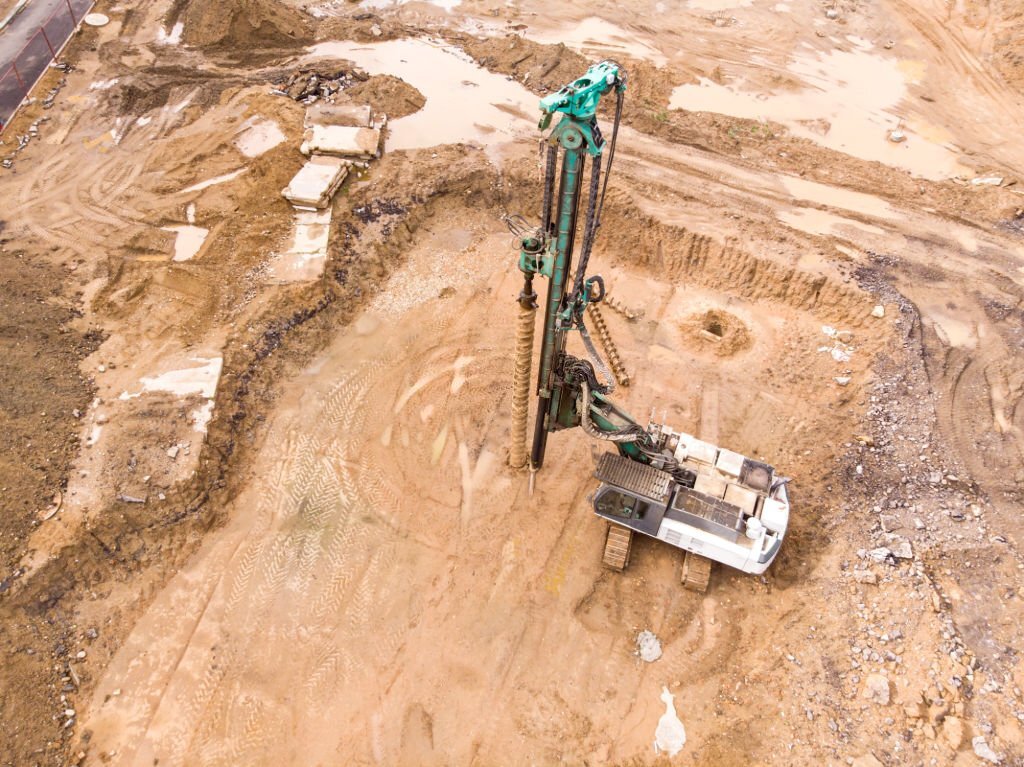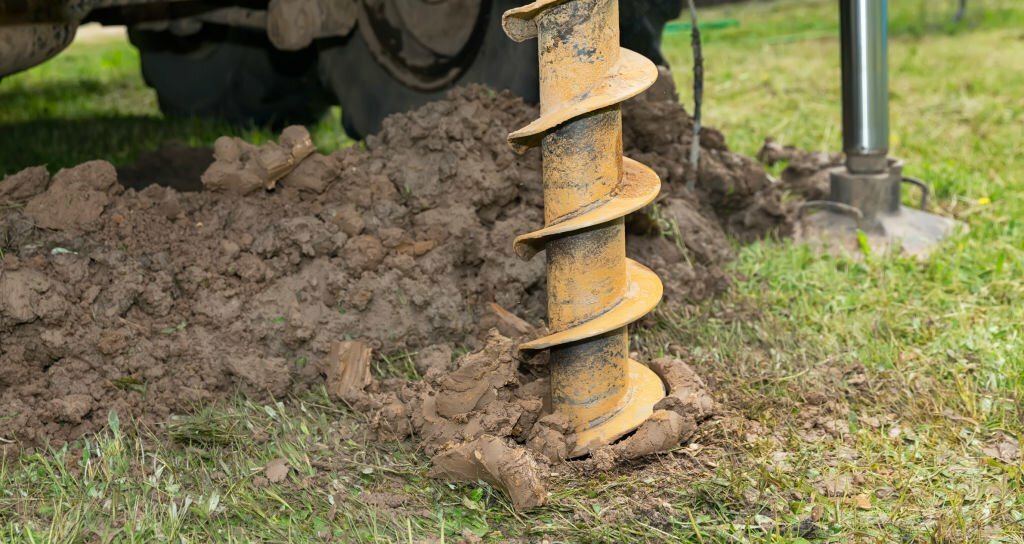
Introduction:
Mining drills, towering titans in the realm of heavy equipment, exhibit a commanding presence as they penetrate the Earth’s core, unearthing precious resources vital for countless industries. The classification of these drills within the expansive heavy equipment domain is not merely utilitarian but unfolds as a fascinating study at the intersection of engineering marvels and geological challenges. This exploration navigates through the various categories that intricately define mining drills, shedding light on their technological complexities and the pivotal role they play in the mining sector.
Within the taxonomy of mining drills, distinctions arise based on their specialized applications and environmental considerations. From surface drills tailored for open-pit mining to the robust efficiency of underground drills designed for tunneling, each category serves a unique purpose. Technologically, mining drills have evolved, incorporating innovations like automated control systems and data-driven analytics, marking a shift toward safer, more efficient, and environmentally conscious mining practices. In this comprehensive exploration, mining drills emerge not only as extractive tools but as symbols of progress, relentlessly pushing boundaries in an industry that thrives on the profound act of delving deep into the Earth’s recesses for invaluable resources.
Surface Mining Drills:

- Surface mining drills are designed for extracting minerals and resources from the Earth’s surface. These drills include rotary drills that bore into the ground, extracting materials like coal, iron ore, and precious metals. Their versatility makes them vital in open-pit mining operations.
Surface mining drills are robust machines designed for extracting minerals and ores from the Earth’s surface. Key to open-pit mining, these drills use rotary motion to bore into diverse materials, from soil to rock, facilitating efficient resource extraction. Often working in tandem with explosives, surface mining drills create controlled points for blasting, breaking up rock formations for easier material extraction.
Modern drills feature advanced technologies like GPS for precise navigation and automation for enhanced safety. Versatile and powerful, they handle various materials such as coal, iron ore, and copper, contributing to the productivity of large-scale mining operations.
Environmental considerations are integral, with dust suppression systems minimizing airborne particles during drilling. Available in various sizes, these drills range from smaller units suitable for quarries to large rigs tailored for major mining projects. In essence, surface mining drills are indispensable tools, ensuring the effective and sustainable extraction of valuable resources from the Earth’s surface.
Underground Mining Drills:

- In the subterranean world of mining, underground mining drills take center stage. These drills are tailored for navigating the intricate networks of tunnels and shafts, extracting resources from beneath the Earth’s surface. Their compact design and maneuverability make them indispensable in confined spaces.
Underground mining drills are specialized machines designed for extracting minerals and ores from beneath the Earth’s surface. Operating in confined spaces, these drills are crucial for accessing valuable resources in tunnels and shafts. They utilize advanced drilling techniques to navigate intricate underground networks, including rotary and percussion drilling methods.
The compact design of underground mining drills allows them to efficiently maneuver through challenging environments. These drills play a pivotal role in breaking rock formations, creating tunnels, and facilitating the extraction of resources like coal, metals, and precious minerals.
Equipped with cutting-edge technologies, such as automation and real-time monitoring, underground drills enhance safety and precision in subterranean operations. Dust suppression systems contribute to environmental considerations by minimizing airborne particles during drilling.
Rotary Drills:

- Rotary drills are a cornerstone in mining operations, especially in surface mining. These drills use a rotating motion to bore into the ground, pulverizing rocks and extracting valuable minerals. Their efficiency and speed make them essential for large-scale mining projects.
- Rotary drills are powerful machines used for drilling into various surfaces, ranging from soil to hard rock. Employed in construction, mining, and exploration, these drills utilize a rotating motion to bore into the Earth’s crust. The core component is the rotary drill bit, which cuts through materials, facilitating tasks like mineral extraction, oil and gas drilling, and creating boreholes for construction purposes.
- In mining, rotary drills play a pivotal role in surface operations, efficiently breaking rock and extracting valuable resources. In construction, they are instrumental in creating foundations and boreholes. Oil and gas industries rely on rotary drills for exploration and extraction, reaching substantial depths beneath the Earth’s surface.
- Modern rotary drills often integrate advanced technologies such as GPS for precision and automation for enhanced control. Their versatility and adaptability make them indispensable tools across diverse industries, contributing to efficient and precise drilling operations.
Percussion Drills:

- Percussion drills, also known as hammer drills, utilize a hammering action to break through hard surfaces. Commonly employed in both surface and underground mining, percussion drills are adept at penetrating rock formations, facilitating the extraction of minerals with precision.
Percussion drills, also known as hammer drills, are powerful tools designed for drilling into hard materials such as rock, concrete, and masonry. They utilize a percussive mechanism in addition to rotary motion to break through tough surfaces. The distinctive hammering action is achieved by rapidly striking the drill bit in a series of short, repetitive strokes, allowing for efficient penetration of hard materials.
Key features of percussion drills include:
- Hammering Mechanism:
- Percussion drills have a hammering mechanism that delivers rapid blows to the drill bit while it rotates. This dual action allows for effective drilling in challenging materials.
- Versatility:
- These drills are versatile and suitable for various applications, including construction, mining, and drilling in hard rock formations. They excel in tasks where conventional rotary drills might struggle.
- Efficient in Hard Materials:
- Percussion drills are particularly effective in penetrating hard materials such as concrete and rock. The hammering action helps break down the material, making it easier for the drill bit to advance.
- Chiseling Functionality:
- Some percussion drills come with a chiseling function, allowing them to be used for tasks like chipping and chiseling in addition to drilling. This versatility enhances their utility in construction and demolition.
- Application in Mining and Exploration:
- In mining and exploration, percussion drills are used for core sampling and borehole drilling. Their ability to handle hard rock formations makes them valuable tools in extracting geological data.
Percussion drills, with their robust design and ability to tackle tough materials, are essential tools in industries where hard rock drilling and concrete work are common. Whether used in construction projects or geological exploration, these drills provide the impact force needed for efficient and precise drilling in challenging conditions.
Exploration Drilling Rigs:

- Exploration drilling rigs are a specialized category designed for uncovering new mineral deposits. These rigs utilize advanced technologies to collect geological data and core samples, aiding in prospecting and decision-making for future mining ventures.
Exploration drilling rigs are specialized machines designed for the crucial task of extracting core samples from the Earth’s subsurface. These rigs play a fundamental role in geological exploration, mining, and environmental assessment. Unlike conventional drilling, exploration drilling focuses on obtaining detailed information about the composition of the Earth’s crust for resource prospecting and scientific research.
Key features of exploration drilling rigs include:
- Core Sample Extraction:
- Exploration rigs are equipped with core barrels that extract cylindrical samples from the ground. These core samples provide valuable information about the geological formations, helping in the identification of minerals, ores, and other subsurface characteristics.
- Geological Data Collection:
- The primary purpose of exploration drilling is to collect geological data. By analyzing core samples, geologists gain insights into the composition, structure, and potential resources of the Earth’s crust.
- Versatility:
- Exploration drilling rigs are versatile and can be adapted for various drilling methods, including rotary, percussion, and diamond core drilling, depending on the geological conditions.
- Advanced Technologies:
- Modern exploration rigs often incorporate advanced technologies such as real-time data transmission, downhole survey tools, and automation, enhancing the efficiency and accuracy of drilling operations.
- Resource Prospecting:
- Exploration drilling is a critical step in resource prospecting for minerals, oil, gas, and water. It provides essential information for decision-making in the development of mining and energy projects.
Exploration drilling rigs are indispensable tools for understanding the Earth’s subsurface. Their ability to extract core samples and provide detailed geological data makes them essential in various industries, contributing to resource discovery, scientific research, and informed decision-making in environmental and mining projects.
Technological Marvels: Mining drills are not merely mechanical behemoths; they are technological marvels. Advanced features such as automation, GPS guidance, and real-time data collection enhance their precision and efficiency. These technologies not only streamline mining operations but also contribute to safety and environmental sustainability.
Applications in the Mining Industry: The applications of mining drills are diverse and indispensable. From the extraction of coal and metals to the exploration of untapped resources, mining drills play a pivotal role in meeting the world’s growing demand for minerals. Their efficiency, precision, and adaptability make them foundational in the mining industry’s pursuit of resource extraction.
Conclusion: In the intricate dance between man and machine, mining drills emerge as the unsung heroes of the mining industry. Their classification within the heavy equipment category reflects the specialized roles they play in extracting Earth’s treasures. From the vast landscapes of open-pit mines to the labyrinthine tunnels of underground operations, mining drills continue to shape the landscape of resource extraction, driving the progress of civilizations and industries alike.

